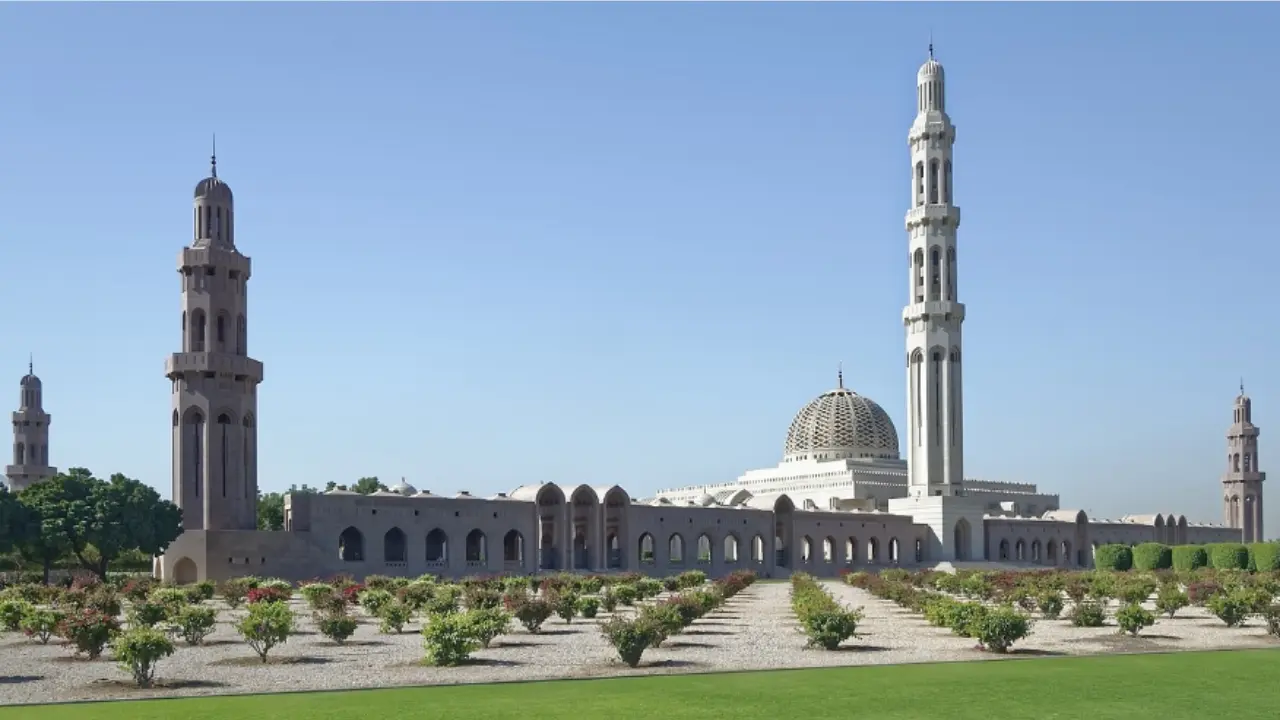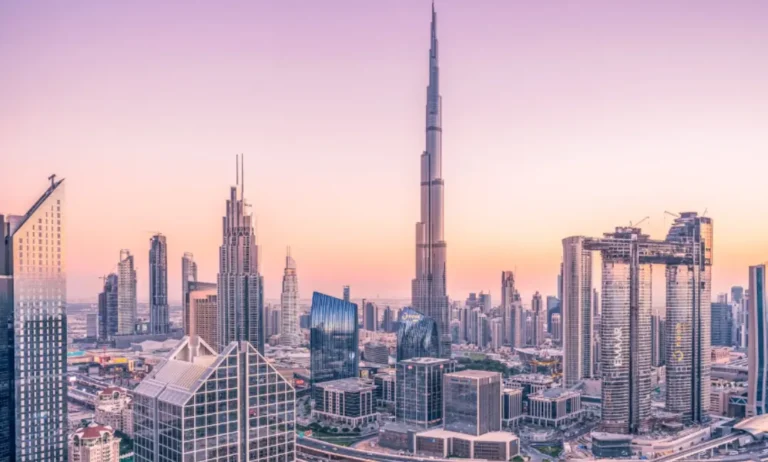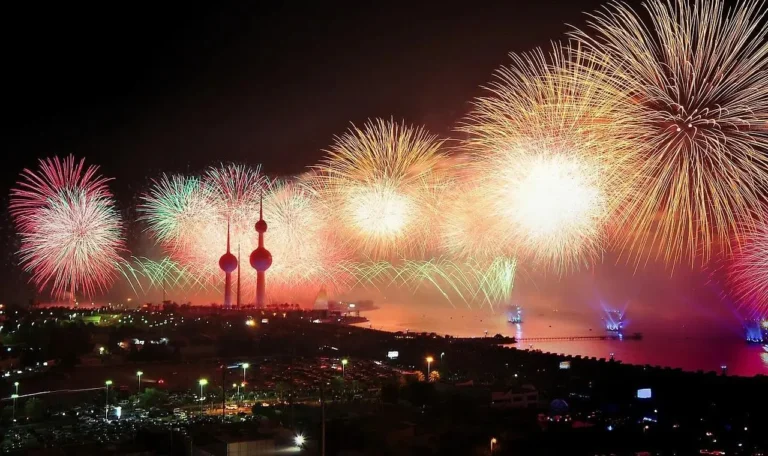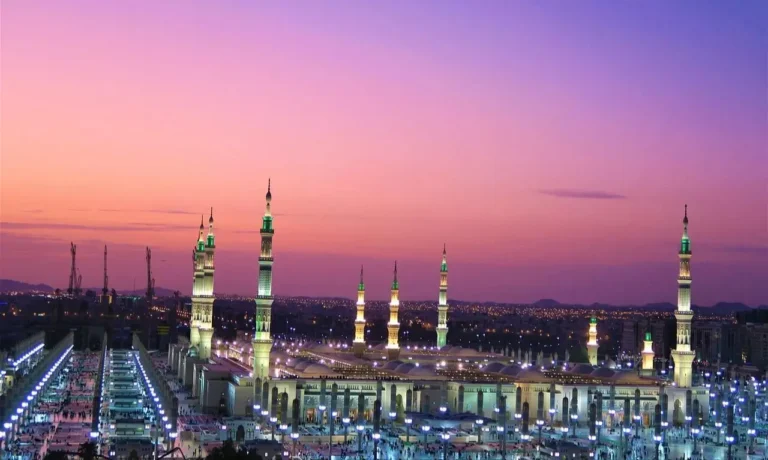Sultan Qaboos Grand Mosque: A Majestic Symbol of Oman’s Heritage
The Sultan Qaboos Grand Mosque is one of the world’s most beautiful and largest mosques. It symbolizes Oman’s rich culture and the late Sultan’s vision to promote peace and understanding through religion. Visitors are often struck by its stunning architecture and the intricate details that showcase traditional Islamic artistry.
Located in Muscat, the capital city of Oman, this mosque can hold up to 20,000 worshippers at once. Its grand prayer hall features a massive chandelier and one of the world’s largest handmade carpets. The mosque is a place of worship and a popular tourist destination that attracts people from various backgrounds.
The Sultan Qaboos Grand Mosque invites exploration and reflection with its striking beauty and serene atmosphere. It stands as a testament to Oman’s commitment to hospitality and respect for all cultures, making it a must-visit for anyone traveling to the region.
History of Sultan Qaboos Grand Mosque
Sultan Qaboos Mosque stands as a significant cultural and religious site in Oman. Its construction reflects artistry and dedication, making it a landmark of Islamic architecture. In 1992, Sultan of Oman Qaboos bin Said thought of building a grand mosque in his country as a gift to its people. To fulfill his dream, he organized a grand competition for the design of the proposed mosque. A British multinational construction company Carilion was awarded the construction work that started in 1994.
Design and Foundation
The design of Sultan Qaboos Grand Mosque combines traditional Islamic style with modern touches. The mosque covers an area of over 416,000 square meters, making it one of the largest in the world.
Its construction began in 1994 and took about six years to complete. The foundation includes high-quality materials such as Omani stone and marble from many countries.
The mosque also features intricate tile work and calligraphy, showcasing the craftsmanship of Omani artisans.
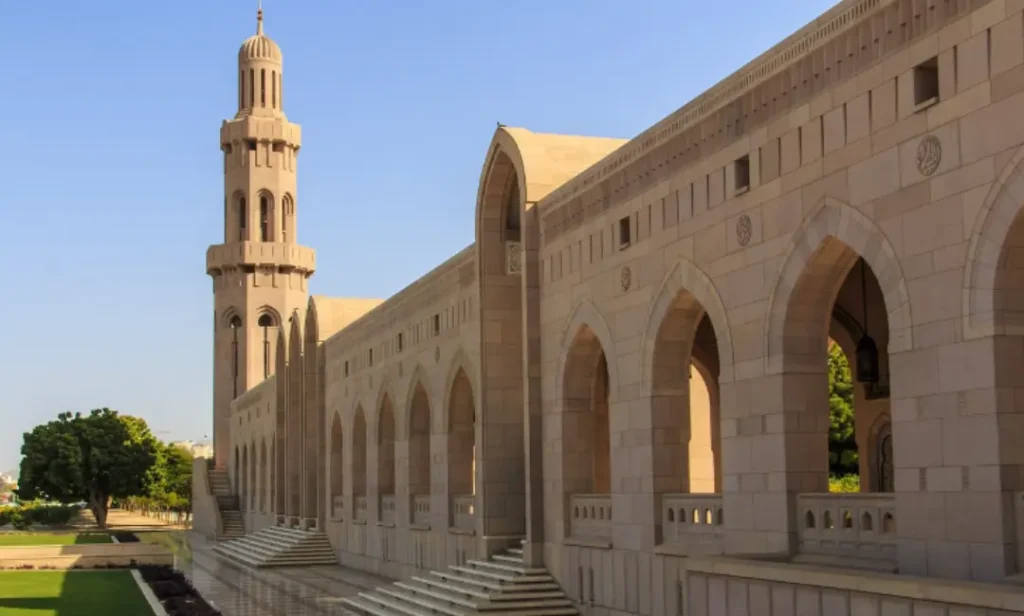
Inauguration and Significance
Sultan Qaboos Grand Mosque was inaugurated on May 4, 2001. The mosque symbolizes the religious tolerance and cultural heritage of Oman.
It can accommodate over 20,000 worshippers at once, serving as a hub for community gatherings and special events. Visitors from around the world often explore the mosque for its architectural beauty and spiritual ambiance.
The mosque serves as a key educational center, providing lessons on Islamic teachings. It plays a vital role in fostering a deeper understanding of Islam and Oman’s history.
Architecture
Sultan Qaboos Mosque features stunning architectural elements. Key highlights include:
- Impressive minaret and dome.
- Spacious main prayer hall.
- Detailed exterior design.
Each part contributes to its unique beauty and cultural significance.
Minaret and Dome
The mosque’s minaret stands at 90 meters, making it one of the tallest in Oman. Its design is a blend of Islamic and modern architecture. The dome, made of white marble, is equally striking.
It has a diameter of 25 meters and reaches a height of 50 meters. Intricate geometric patterns adorn both the dome and minaret. These features are beautifully illuminated at night, adding to the mosque’s majestic appearance.
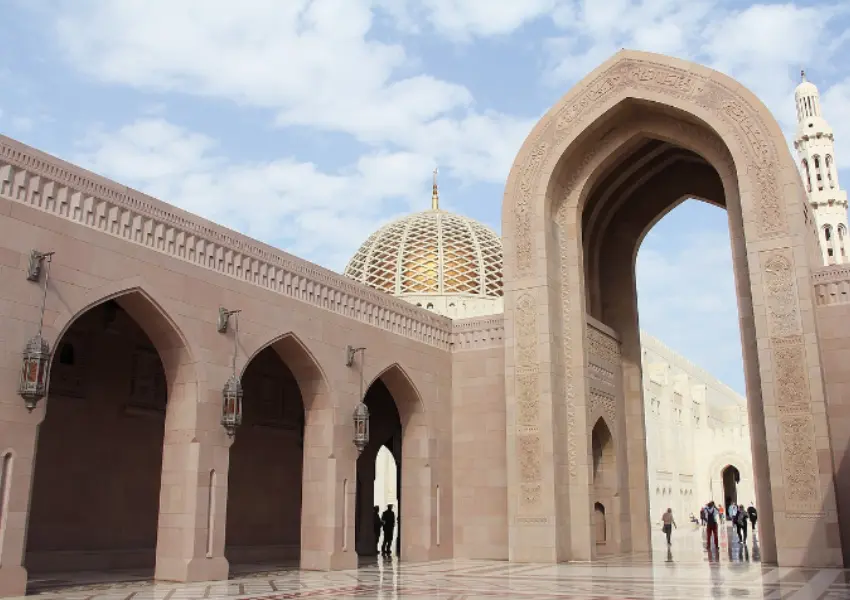
Main Prayer Hall
The main prayer hall is vast, accommodating around 20,000 worshippers. Its height reaches 45 meters, providing an open and airy space. The hall boasts a stunning chandelier made of Swarovski crystals, which is one of the largest in the world.
The carpet covering the hall is handmade and includes over 1.7 million knots. Decorative calligraphy and motifs decorate the walls. This space is not just a place of worship but also a gathering point for the community.
Exterior Design
The exterior design of Sultan Qaboos Mosque reflects traditional Islamic architecture. The building is made from beautiful white and golden sandstone. Ornate arches and intricate carvings are found throughout the facade.
Surrounding gardens and fountains enhance its tranquil environment. The entrance features grand doorways that welcome visitors. This careful attention to detail emphasizes the mosque’s cultural importance in Oman.
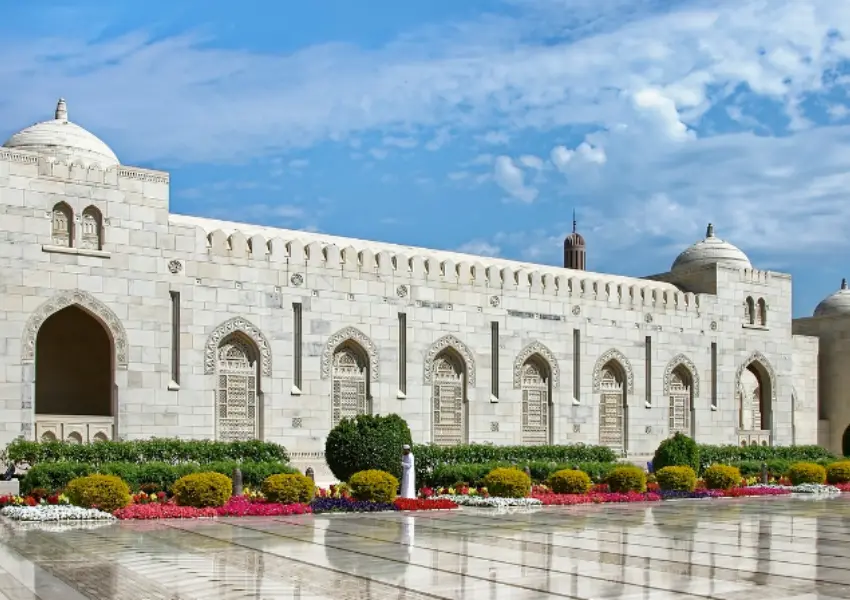
Cultural Significance
The Sultan Qaboos Grand Mosque holds a special place in the cultural and religious life of Oman. It serves as a symbol of Islamic heritage and offers educational opportunities for the public.
Role in Islamic Culture
The mosque is a central hub for Islamic worship and a reflection of Oman’s rich religious heritage. It provides a place for daily prayers and community gatherings. The architecture showcases Islamic design, with intricate details and large prayer halls.
The mosque is dedicated to promoting Islamic teachings and values. It often hosts lectures and events that enhance knowledge of Islam. This engagement fosters a sense of community among worshippers and encourages cultural exchange.
Public Access and Education
Sultan Qaboos Grand Mosque is open to visitors from all backgrounds. It aims to promote understanding of Islam and its practices. Guided tours are available to explain the mosque’s history, architecture, and significance.
Educational programs are regularly held to teach guests about Islamic rituals and beliefs. These initiatives help to break down misunderstandings about the faith. The mosque underscores its role as an open institution for learning, connecting people through shared knowledge.
Art and Decorations
The Sultan Qaboos Grand Mosque features impressive art and decorations that reflect the rich cultural heritage of Oman. Its design includes intricate calligraphy, stunning patterns, and beautiful lighting elements.
Calligraphy and Patterns
Calligraphy plays a significant role in the mosque’s decoration. The walls are adorned with Arabic script that features verses from the Quran. This art form enhances the spiritual atmosphere of the mosque.
Patterns also contribute to the visual appeal. Geometric designs are prominent, showcasing traditional Islamic art. These patterns are carefully crafted and blend seamlessly with the overall architecture, creating a sense of harmony and balance throughout the space.
Chandeliers and Carpet
The chandeliers in the Sultan Qaboos Grand Mosque are remarkable pieces of art. They hang gracefully from the ceiling and are made from crystal, reflecting light beautifully. The largest chandelier weighs around eight tons and adds a touch of elegance to the interior.
The carpet is another notable feature. It is one of the largest handwoven carpets in the world, covering a substantial area of the prayer hall. The intricate designs and vibrant colors create a warm and welcoming environment for worshippers.
Maintenance and Preservation
The Sultan Qaboos Grand Mosque requires regular maintenance to keep its beauty and integrity. The mosque is made from different materials, like marble and wood, which need proper care.
Key Maintenance Tasks
- Cleaning: Regular cleaning helps remove dust and stains from surfaces. Special care is taken with delicate areas.
- Structural Inspections: Experts examine the building for any signs of damage. It includes checking for cracks or wear in the materials.
- Landscape Care: The gardens and surrounding areas are maintained to enhance the mosque’s beauty. It involves trimming plants and watering regularly.
Preservation Techniques
- Restoration Work: When necessary, parts of the mosque are restored to their original condition. Skilled artisans often handle this work.
- Climate Control: Systems are in place to manage humidity and temperature inside the mosque. It protects artwork and materials from damage.
- Public Awareness: Tours and information sessions educate visitors about the mosque’s care. Knowledge helps preserve cultural heritage.
Regular maintenance and preservation efforts ensure the Sultan Qaboos Mosque remains a symbol of beauty and history for future generations.
How to Reach Sultan Qaboos Grand Mosque?
One of the best things about Sultan Qaboos Grand Mosque is that it is only 12.5 km away from Muscat International Airport. It takes only 15 minutes to reach the mosque from the airport. The visitors can get there through their transport or by hiring a taxi from the airport. Moreover, they can ride any of the bus lines that stop near this grand mosque. Al Maha bus stop is the most known bus stop near Sultan Qaboos Grand Mosque.
Opening Hours of Sultan Qaboos Grand Mosque
The mosque remains open from 4 AM to 9:30 PM for offering prayers. However, non-Muslims can visit this beautiful mosque between 8:00 AM and 11:00 AM. But, they cannot visit it on Friday due to preparations for the Juma Prayer.
Non-Muslims can visit the mosque from outside and take pictures besides visiting hours. However, they cannot enter the main hall. Therefore, it is far better to avoid visiting the mosque on Fridays or at prayer times.
Dress Code For Visiting Sultan Qaboos Mosque
If you are planning to visit this grand mosque, always follow the dress code to visit this religious place. Men are not allowed to visit the mosque wearing shorts or sleeveless shirts. Women have to wear full-length dresses, long-sleeved blouses, and loose pants. They will also wear a scarf to cover their hair.
Remember to remove your shoes while entering the prayer hall. For your convenience, there are shoe racks available within the courtyard.
Things to Keep in Mind
- Entrance to Sultan Qaboos Grand Mosque is free. Therefore, never give a penny to anyone asking for a fee.
- If you accompany children below 10 years of age, don’t take them to the main prayer hall.
- There is no permission to eat, drink, or sleep in the mosque.
- Avoid usage of mobile phones while entering the hall.
- Due to limited visiting hours, there may be a great rush of people. Therefore, try visiting as early as possible.
- If you want to take a virtual tour of Sultan Qaboos Grand Mosque, visit their official website here.
Frequently Asked Questions (FAQs)
What are the visiting hours for the Grand Mosque in Oman?
The Grand Mosque in Oman is open from 8:00 AM to 11:00 AM from Saturday to Thursday. On Fridays, it is closed to visitors but remains open for worshippers during prayer times.
Is there an entrance fee to visit the Grand Mosque, and if so, what are the costs?
There is no entrance fee to visit the Sultan Qaboos Mosque. Entry is free for all visitors.
Can visitors take photographs inside the Grand Mosque?
Yes, visitors can take photographs inside the Grand Mosque. However, they should respect the holy space and avoid distracting others during prayer.
What attire is considered appropriate for visitors to the Grand Mosque?
Visitors should dress modestly when visiting the mosque. For women, it is appropriate to wear loose-fitting clothing and cover their hair. Men should wear long pants and avoid shorts.
What are the unique architectural features of the Grand Mosque in Oman?
Sultan Qaboos Grand Mosque features stunning domes, intricate tilework, and a large prayer hall. It is known for its impressive chandelier and beautiful carpets, creating a serene atmosphere.
Who was responsible for the construction of the Grand Mosque?
The Sultan Qaboos Grand Mosque was built under the direction of Sultan Qaboos bin Said. Construction began in 199 and was completed in 2000, showcasing Islamic architecture and design.

